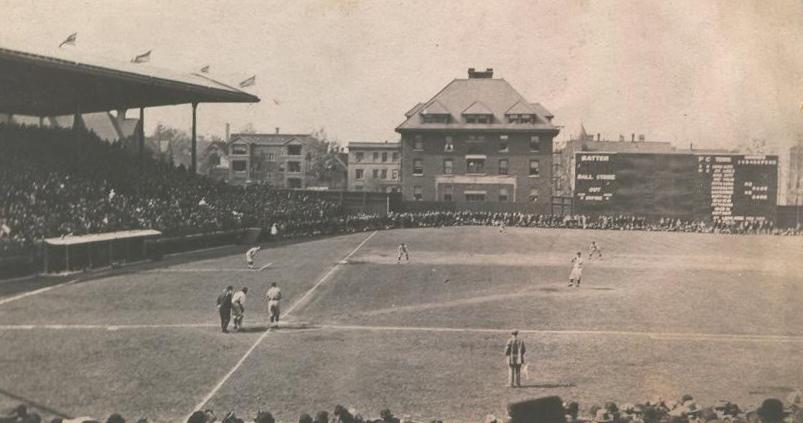 103 years ago this week, construction was finished on Chicago’s Wrigley Field. It cost $250,000 to build the field, which opened as Weeghman Park. Back in 1914, the field was home to the upstart Federal League team, the Chicago Whales. At this time, the Cubs were playing at Chicago’s West Side Grounds.
103 years ago this week, construction was finished on Chicago’s Wrigley Field. It cost $250,000 to build the field, which opened as Weeghman Park. Back in 1914, the field was home to the upstart Federal League team, the Chicago Whales. At this time, the Cubs were playing at Chicago’s West Side Grounds.
Weeghman Park had a seating capacity of 14,000 with four acres of Kentucky bluegrass blanketing the outfield. Then in 1915, the Federal League disbanded. The Chicago Cubs took advantage of the opening and moved in to the new park, shortly thereafter naming it Cubs Park.
In the 1920s, the Cubs began renovating the field. During the 1922-1923 off season, wooden bleachers were installed and the capacity increased to 20,000. Then in 1926, the field’s name was changed from Cubs Park to Wrigley Field in honor of team owner William Wrigley, Jr.
It wasn’t until 1937 that some of Wrigley Field’s most famous features were added, including the 27- by 85-foot manually-operated scoreboard, the outfield bleachers and the signature ivy.
Several seating additions throughout the years have led to the current game-day capacity of more than 38,000. Although many renovations have taken place during Wrigley Field’s 103 year history, the field still looks largely the same as it did in 1914. Wrigley’s old-time charm is just one of the countless reasons why fans keep coming back year after year.



